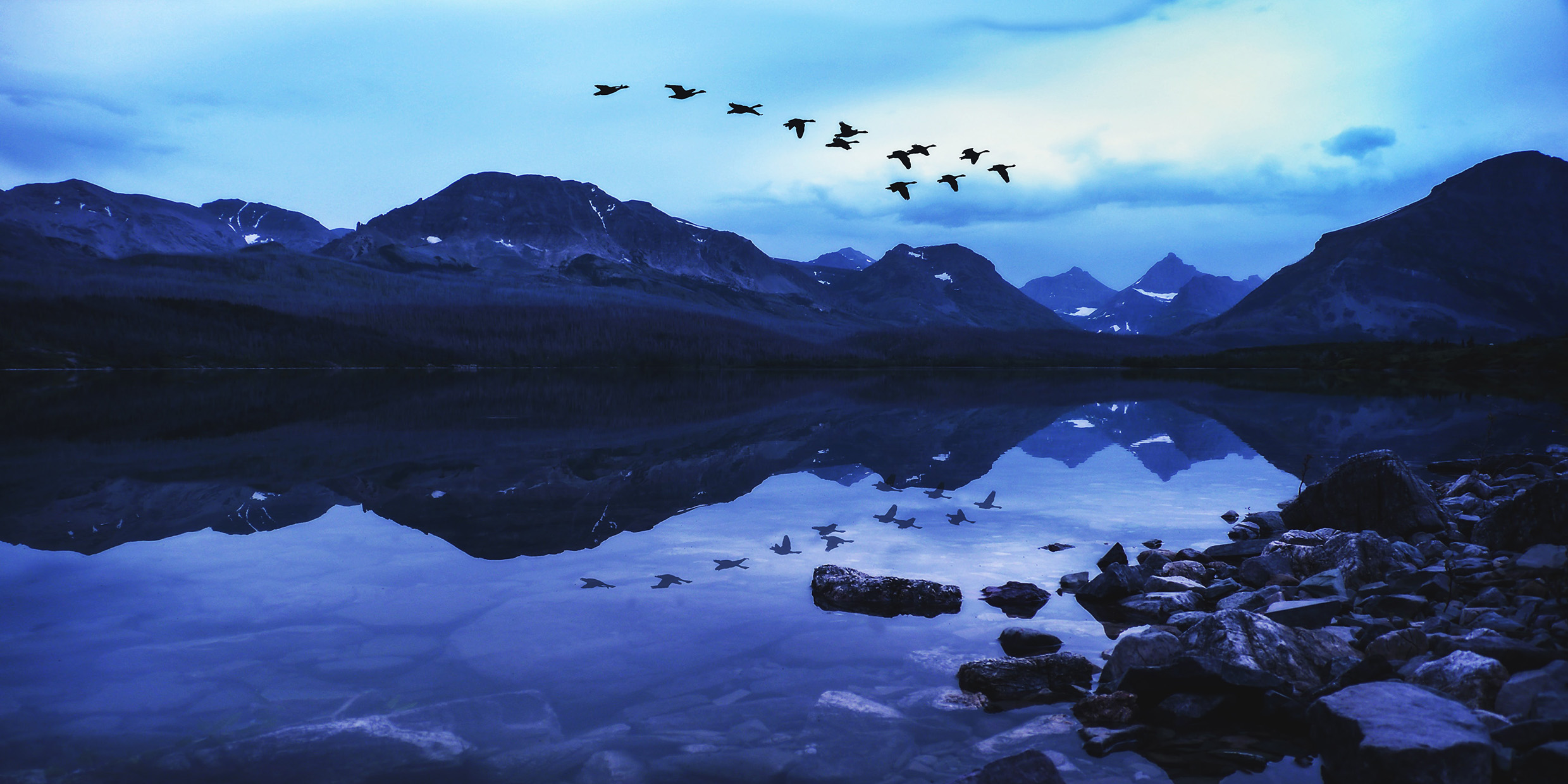Originally published 30 October 2001
Honk time. One of those late fall mornings when the sky turns a Maxfield Parrish blue just before sunrise. One, two, three ragged files of Canada geese skim the treetops above my head, preceded and followed by their honking chorus, a noise of ram’s horns and shouts that would have toppled the walls of Jericho.
I freeze in my tracks to watch them pass. They are heading south with feathers ruffed by the last warm breezes of the season. When their honks have faded into silence, there’s a chill in the air. The spinning planet has leaned into its winter curve, away from the sun.
And then, just when I think the racket had passed, I hear another barely audible chorus of honks, high in the air. I look up to see a long, asymmetrical vee of perhaps a hundred geese, moving south at high altitude, catching the first direct rays of a sun that has not yet broken the horizon.
Like geese of gold.
These are the moments that define a day, define a life. And it’s not just the beauty, not just the hundred geese spilled like gold doubloons across the sky. Something else is at work here, some hint of mystery, a mystery deeper than our knowing.
Why the vee?
Why that neat Euclidean arrow aimed at the sunnier south?
Scientists have tried to find the reason, not yet successfully. There are two theories on the table — aerodynamic efficiency and ease of communication.
The aerodynamic analysis was first done by aerospace engineers Peter Lissaman and Carl Shollenberger in 1970. The advantage of formation flying derives from something called “wingtip vortex,” they say. On the downstroke, air beneath a bird’s wing is pushed downward. Beyond the wingtip, air moves upward to restore the displaced air. This updraft provides extra lift to the next bird in line.
The effect would work even if the birds were flying abreast, but a vee formation assures that all members of the flock achieve approximately the same lift advantage. Even the lead bird at the vee’s vertex gets a boost.
Flying geese will more or less naturally adopt positions in flight that optimize their aerodynamic advantage. With ideal spacing, birds flying in a vee can gain a 70 percent range increase over a bird flying alone, calculate Lissaman and Shollenberger.
Observations of actual flights, however, show that geese are seldom in optimum position for maximizing lift. This has led other researchers to suggest that geese fly in vees to keep each other in view and optimize communication.
Recently, a group of French researchers trained white pelicans to fly behind a motorboat or ultralight airplane. They attached electronic heart rate monitors to the birds. They found that the birds saved a significant amount of energy (11 to 14 percent) when flying in formation, as compared to flying alone.
The energy saving appears to have been partly due to flying in the wakes of other birds (2 to 3 percent). It also seems to result from the fact that the birds glided more and flapped their wings less when flying in formation, which may or may not have been a vortex response.
So, the answer is still up in the air. The important thing here is that both theories assume an advantage for the birds, to be explained, ideally, by some sort of mathematical analysis based on physical laws. It is a fundamental tenet of science that things don’t happen by happenstance, or merely to please the human watcher. We may find the vee formations beautiful, but our aesthetic taste has zero value as an explanation.
Everything organic is driven by adaptation. Creatures unwittingly seek the competitive edge that helps their genes flow into the future. This leads quite naturally to complexity. Life swims upstream against the relentless push of entropy that seeks to grind the universe into disarray.
The geese that honk their calliope songs in the morning sky have adopted their ordered vee formations by drawing upon a corresponding diminishment of order at the heart of the sun. We, too, enhance our genetic capital at the expense of a star. We are, all of us, building rising pinnacles of order in a universe that is destined, ultimately, to tumble all our towers to dust.
But this is not reason for despair. The climb of life toward complexity has been going on for billions of years and will go on for billions more, as long as the sun continues to shine. Those black-and-white birds on golden wings will fly south for countless years if we let them be.
Our task then is more cultural than biological: To quell the disarray within our own species, and create on planet Earth the kind of interspecies Garden of Eden that we have mistakenly looked for in the past.



